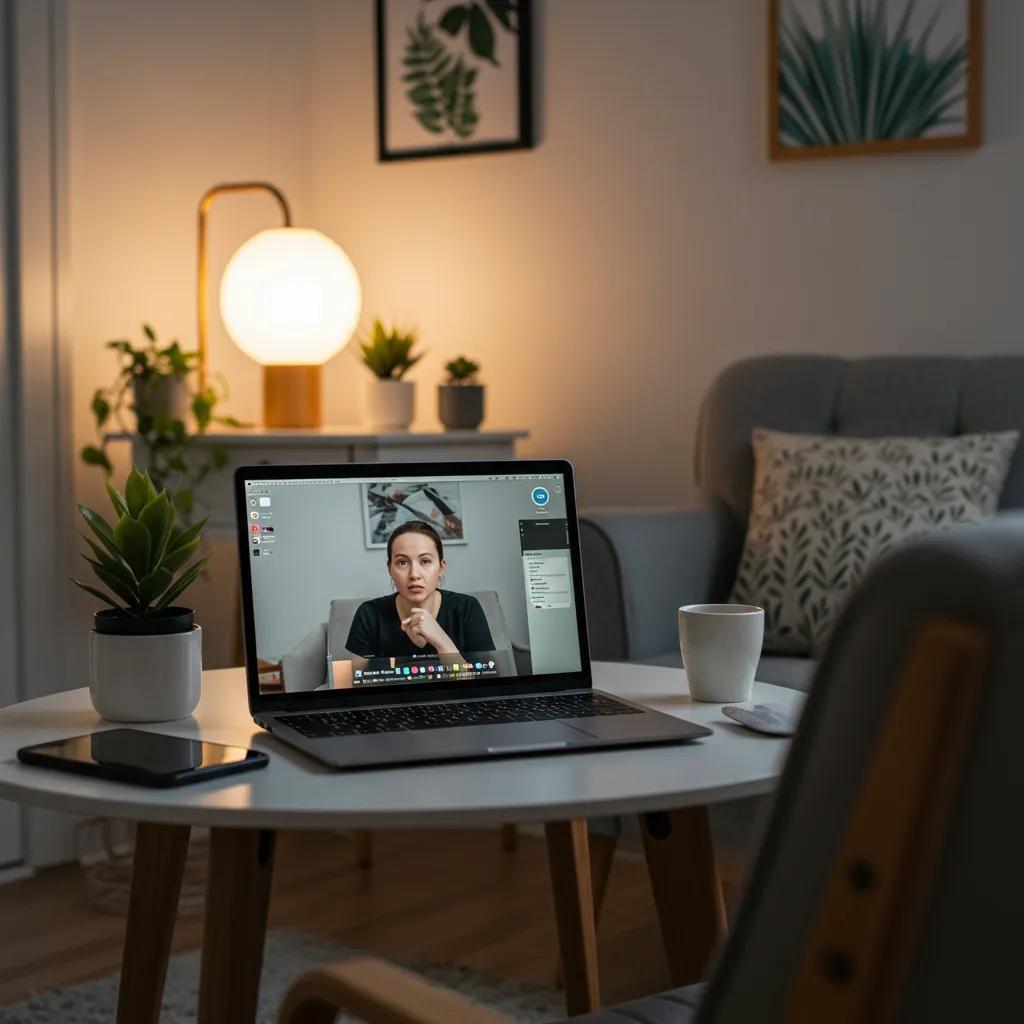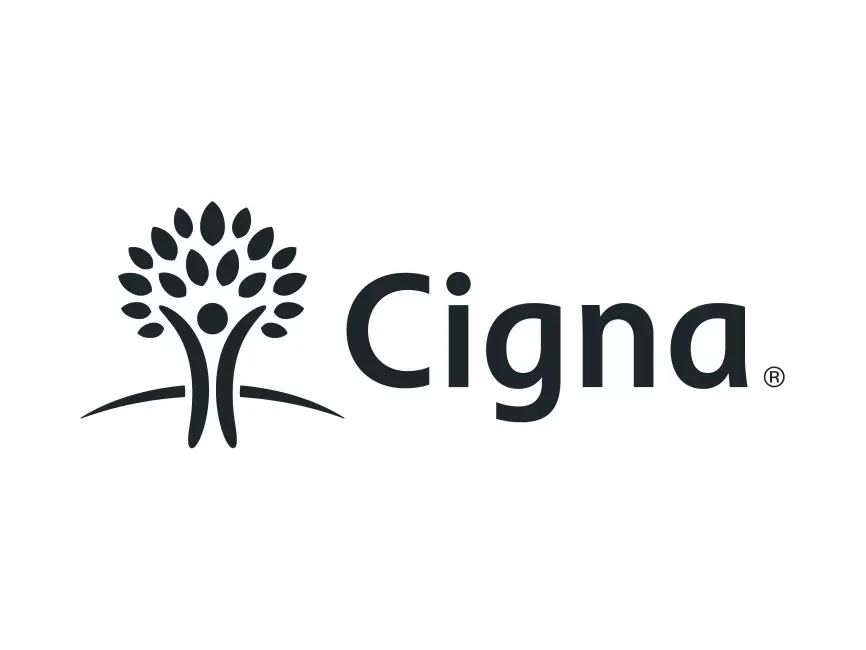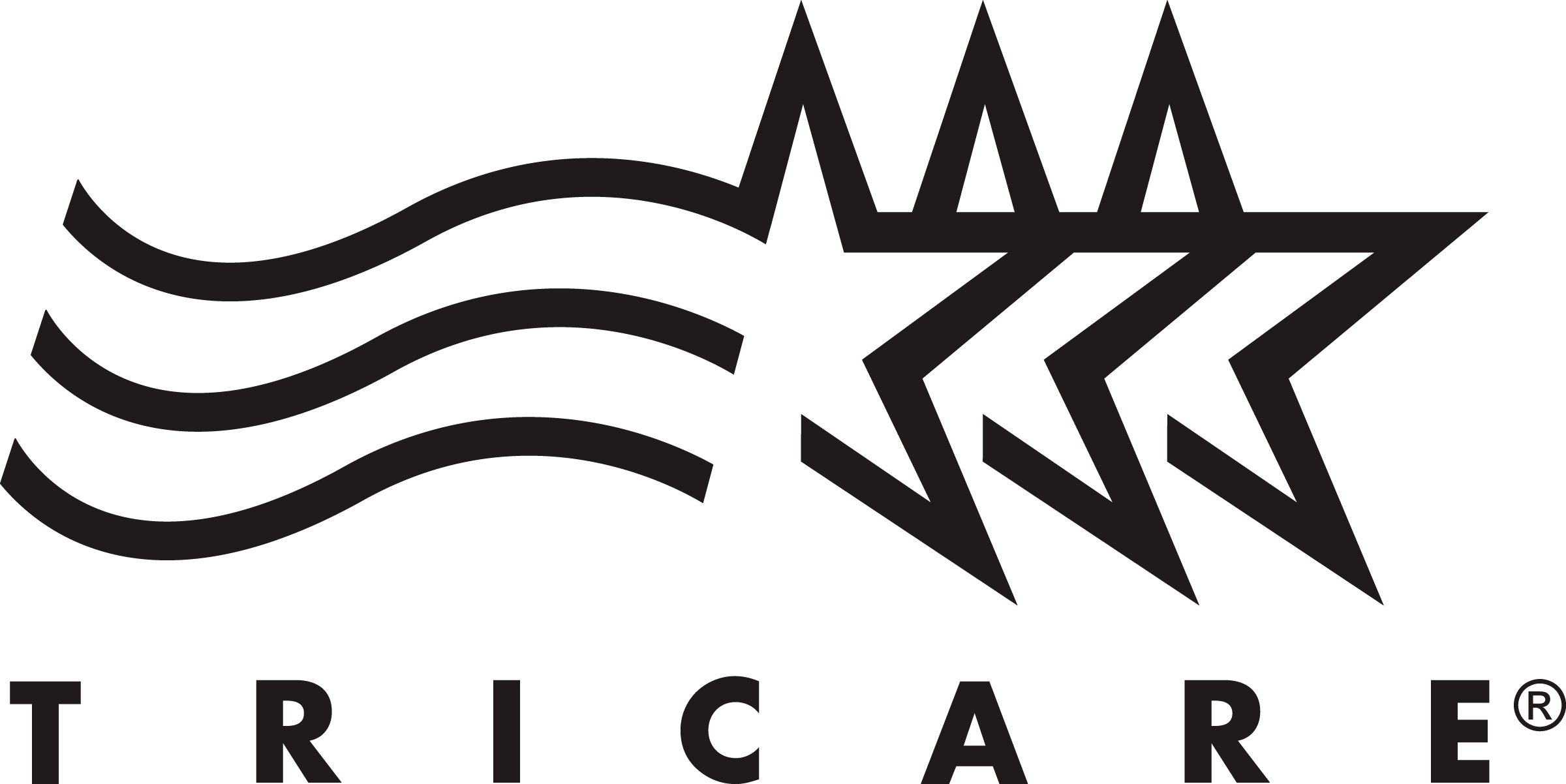Decoding the Phenomenon: What is Zoom Fatigue?
To effectively combat something, you must first understand it. Zoom fatigue isn’t just a catchy phrase; it’s a genuine psychological and physiological response to the unique demands of prolonged video conferencing. While the name points to a specific platform, the phenomenon applies broadly to any extended interaction using video communication technology, including platforms used for virtual therapy and support groups at places like Compassion Recovery Center.What exactly causes this feeling of exhaustion? Unlike in-person interactions, video calls require us to work harder in several ways:- Excessive Close-Up Eye Contact: In a physical meeting, you might look around, take notes, or glance at different people. In a video call, everyone is often looking directly into the camera, simulating intense, unblinking eye contact from multiple people simultaneously. Our brains interpret this as an intense social situation, leading to heightened alertness and stress over time.- Cognitive Overload from Interpreting Non-Verbal Cues: In face-to-face conversations, we naturally process non-verbal cues like body language, tone of voice, and micro-expressions without conscious effort. On video calls, these cues are often distorted, delayed, or simply missing due to frame rates, lighting, and screen size. Our brains have to work much harder to consciously process what someone is saying and feeling based on limited visual information, leading to significant cognitive strain.- Mirror Anxiety: Seeing a real-time video of yourself during a call can be incredibly distracting and stressful. It’s like having a mirror constantly in front of you during a meeting. This self-monitoring requires cognitive resources and can lead to increased self-consciousness or anxiety about how you appear to others, diverting mental energy away from the actual conversation or therapeutic content.- Reduced Mobility and Physical Constraints: In-person meetings or therapy sessions allow for natural movement – shifting posture, walking to get water, standing up. Video calls typically require you to remain relatively static within the camera’s frame. This lack of physical movement contributes to physical discomfort and mental fatigue.- Constant Performance Pressure: Being on camera can feel like being “on stage.” There’s a subtle pressure to appear engaged and attentive at all times, as any lapse might be misinterpreted due to the lack of peripheral cues. This constant performance aspect is mentally taxing.The symptoms of virtual fatigue can manifest in various ways, both psychologically and physically. You might experience mental exhaustion, difficulty concentrating, irritability, or a feeling of being drained even after sessions that should feel therapeutic or supportive. Physical symptoms can include eye strain, headaches, neck or shoulder pain from poor posture, and a general feeling of physical tiredness. In the context of addiction treatment, these symptoms can be particularly detrimental, potentially leading to decreased motivation for therapy, difficulty processing complex emotional content, reduced ability to connect with peers in group sessions, and even a higher risk of relapse if the fatigue becomes overwhelming. Recognizing these signs in yourself or a loved one is the first critical step towards managing them effectively within a
Intensive Outpatient Program (IOP) or other virtual settings. If you’re experiencing these challenges, reaching out to the team at Compassion Recovery Center can provide you with tailored strategies and support within your virtual treatment plan. You can
contact us to discuss your concerns.
The Ascendance of Virtual Therapy and Support Groups in Addiction Treatment
The past few years have seen a monumental shift in how healthcare is delivered, and addiction treatment is no exception. What was once a niche offering has rapidly become a cornerstone of accessible care: telehealth services. The global pandemic significantly accelerated this trend, pushing providers and patients alike to embrace virtual platforms out of necessity. This catalyst, however, merely highlighted the inherent benefits of virtual care that were already being explored.For individuals grappling with substance use disorders or mental health challenges, virtual therapy and support groups offer compelling advantages. Firstly, they drastically increase accessibility. People who live in rural areas, those with limited transportation, individuals with physical disabilities, or busy professionals can now access high-quality care from the comfort and privacy of their homes. For residents of Orange County, California, where traffic is notoriously heavy, virtual care eliminates hours spent commuting, making it much easier to adhere to a consistent treatment schedule.Secondly, virtual treatment can significantly reduce the stigma often associated with seeking help for addiction or mental health issues. Attending sessions from home provides a layer of privacy that can feel more comfortable for many individuals who might otherwise hesitate to walk into a physical treatment center.Thirdly, telehealth allows patients to remain connected to their support systems – family, friends, and community – while undergoing treatment. This is particularly important for many, as isolation can be a significant trigger for substance use. It also facilitates participation in services like virtual couples counseling rehab, allowing loved ones to participate more easily.Finally, virtual care allows for greater flexibility in scheduling, making it possible for individuals to balance work, family responsibilities, and treatment. Programs like
virtual IOP are designed with this flexibility in mind, offering structured therapy and support that fits into a person’s life, rather than requiring them to put everything on hold.Compassion Recovery Center recognized these benefits early on and has built its model around providing expert, compassionate care primarily through a virtual format. Serving Orange County and beyond, they offer a range of online services, including
Intensive Outpatient Program (IOP),
Partial Hospitalization Program (PHP) (often with a virtual component or leading into virtual care),
Outpatient Detox,
Mental Health Treatment, and specialized
Dual Diagnosis Treatment delivered via telehealth. This virtual model makes
remote drug rehab Orange County and virtual
alcohol rehab programs a reality for many who need it most.While the rise of virtual therapy and support groups has democratized access to care, it has also brought new challenges, like Zoom fatigue. Addressing this is vital to ensure that the immense potential of telehealth in addiction recovery is fully realized and that patients can engage meaningfully with their treatment, even when it’s delivered through a screen. Understanding the roots of fatigue in this specific context is the next crucial step. If you’re ready to explore the benefits of virtual treatment, you can
check insurance coverage to see how Compassion Recovery Center’s services fit your needs.
Identifying the Specific Causes of Zoom Fatigue in Virtual Therapy Settings
While the general causes of Zoom fatigue apply across various contexts, certain aspects of the virtual therapy and support group environment can amplify these effects. Addiction treatment requires vulnerability, intense focus, and deep emotional processing. When you layer the cognitive strain of video calls onto this already demanding process, it can exacerbate fatigue and potentially hinder therapeutic progress.Let’s delve deeper into how the general causes of Zoom fatigue specifically impact individuals in virtual therapy and support groups:- Cognitive Overload and Constant Screen Exposure: Therapy often involves discussing complex emotions, processing trauma, learning new coping mechanisms (like those taught in
online CBT therapy), and navigating difficult interpersonal dynamics within groups. Doing this while simultaneously processing visual cues from a screen, filtering out background distractions visible in your video feed, and managing the self-consciousness of being on camera creates a significant cognitive load. Your brain is working overtime just to manage the medium of communication, which can leave less mental energy for the crucial work of therapy itself. Prolonged exposure to screens, regardless of content, is known to cause eye strain and mental fatigue, but the interactive nature of video calls intensifies this.- Lack of Physical Cues and Increased Mental Strain: Much of the therapeutic process relies on subtle, non-verbal communication. Therapists and group members alike rely on body language, shifts in posture, eye movements, and the energy in a room to fully understand what is being communicated, particularly in sensitive moments. In a virtual setting, these cues are limited, distorted, or missing. This forces participants to rely more heavily on verbal cues, which require more conscious processing. Additionally, the therapist’s ability to pick up on subtle signs of distress or discomfort in a client might be hampered, requiring clients to verbally articulate more, which itself can be draining. Group dynamics also become harder to read; understanding when to speak, when to listen, and how others are reacting requires intense concentration on limited visual information. This increased mental strain detracts from the core purpose of the session.- The Challenge of Maintaining Engagement in Virtual Settings: In a physical room, the shared presence of others naturally encourages engagement. In a virtual setting, it’s easier for the mind to wander. Distractions in the home environment (pets, family, notifications) compete for attention. The feeling of being a “talking head” on a screen can make it harder to feel fully present and connected to the therapeutic process or the group. Maintaining focus requires deliberate effort, which contributes to fatigue. Furthermore, the pressure to appear engaged (maintaining eye contact with the camera, nodding) adds another layer of performance that is mentally taxing, separate from genuine engagement with the material or interaction. For individuals in early recovery, who may already struggle with focus or emotional regulation, this added challenge can be particularly difficult.Understanding these specific ways in which virtual therapy can contribute to fatigue is the first step towards building resilience. It’s important to acknowledge that these are systemic issues with the technology itself, not personal failings. By recognizing these challenges, individuals and providers can work together to implement strategies that minimize their impact and allow the therapeutic process to thrive, even in a virtual environment. Compassion Recovery Center is committed to helping patients navigate these unique challenges within their
Virtual IOP Program and other services. Learning more about these challenges and how to address them is a key part of setting yourself up for success in
remote drug rehab or
alcohol rehab programs. Ready to start your recovery journey?
Start your free assessment today.
Practical Strategies to Actively Combat Zoom Fatigue During Virtual Therapy
Fortunately, while Zoom fatigue is a real challenge, it’s not insurmountable. There are many proactive strategies you can implement to significantly reduce its impact and enhance your experience in virtual therapy and support groups. These strategies focus on adjusting your environment, your behavior, and your mindset around video conferencing.One fundamental strategy is implementing breaks and reducing unnecessary screen time. If you have multiple virtual sessions in a day (common in an
Intensive Outpatient Program (IOP) structure), schedule short breaks between them. Even five or ten minutes away from the screen can make a difference. During these breaks, stand up, stretch, walk around, look out a window at something distant to rest your eyes, or grab a glass of water. Avoid immediately checking emails or social media during breaks – the goal is to reduce screen exposure, not just switch screens. Outside of scheduled therapy, be mindful of your overall screen time. Can some communication be done via phone call or email? Can you replace some screen-based leisure activities with reading a book, exercising, or spending time outdoors? Consciously reducing total screen time frees up mental and physical energy for your important therapeutic sessions.Techniques for maintaining focus and engagement without excessive strain are also vital.- Minimize Background Distractions: A cluttered or busy background can be distracting to both you and others. Find a quiet, neutral space for your sessions. Inform household members that you need uninterrupted time. Turn off notifications on your phone and computer. Close unnecessary tabs on your browser. The fewer things competing for your attention, the easier it is to focus on the session content.- Use “Hide Self View”: Most video platforms allow you to hide your own video feed. Doing this can dramatically reduce mirror anxiety and the cognitive load of constantly monitoring your appearance. You’ll still be visible to others, but you won’t be distracted by your reflection.- Position Your Camera for Natural Eye Contact: Place your camera at eye level. Position the video window near the camera if possible. Try looking at the camera when you are speaking, and occasionally when listening, to simulate more natural eye contact. However, don’t feel pressured to stare unblinkingly – allow your eyes to rest occasionally.- Adjust Lighting: Good lighting is crucial. Avoid having a bright window or light source directly behind you, as it will silhouette you. Instead, have light source in front of you or slightly to the side. This makes your face clearer and reduces strain from poor visibility.- Improve Your Ergonomics: Ensure your workspace is set up comfortably. Your screen should be at eye level to prevent neck strain. Use a comfortable chair that supports your back. Ensure your keyboard and mouse are positioned ergonomically to avoid wrist strain. Physical discomfort adds to overall fatigue.- Actively Engage in Different Ways: While maintaining focus is key, vary your engagement slightly. Take brief notes by hand (away from the screen). Occasionally shift your posture. Allow yourself to look away from the screen briefly if someone else is speaking, just as you would in a physical room. Practice active listening – nodding, using verbal affirmations – but allow yourself moments of natural movement.Adjusting virtual therapy settings and expectations can also help. Talk to your therapist or group facilitator about your experience with fatigue. They may be able to suggest platform features you weren’t aware of, adjust session length or frequency if clinically appropriate, or incorporate techniques into the session to help manage fatigue (e.g., short guided breathing exercises). Understand that it’s okay to feel tired; acknowledge it without judgment. Manage your expectations – you might not feel as “energetic” after a virtual session as you would after an in-person one, and that’s normal. Focus on the value of the content and connection, even if the medium is challenging.By implementing these strategies, you can create a more comfortable and less draining virtual environment, allowing you to fully engage with the critical therapeutic work happening in your
Virtual IOP Program, individual therapy, or support groups. Compassion Recovery Center is dedicated to supporting you in your virtual journey; feel free to
reach out today to discuss ways to optimize your experience.
Integrating Compassion Recovery Center Services to Minimize Fatigue
Compassion Recovery Center specializes in providing high-quality addiction and
mental health treatment primarily through a remote, telehealth model. This approach is inherently designed for flexibility and accessibility, but the Compassion Recovery Center team also understands the potential for challenges like Zoom fatigue. Their programs and therapeutic approaches are structured with patient well-being and engagement in mind, offering ways to mitigate fatigue within the framework of effective treatment.Compassion Recovery Center’s
Virtual IOP Program is a cornerstone of their offerings. While it involves significant virtual time, the program structure is built to balance intensive therapy with practical application in daily life. Therapies like
online CBT therapy (Cognitive Behavioral Therapy) and DBT (Dialectical Behavior Therapy) are delivered by experienced clinicians who are skilled in engaging clients effectively through a virtual medium. Therapists at Compassion Recovery Center are trained to recognize signs of fatigue or disengagement in virtual sessions and can employ techniques to re-engage clients, suggest short breaks within longer sessions, or vary the session format. They utilize screen sharing judiciously, incorporate interactive elements where appropriate, and focus on clear, concise communication to reduce cognitive load. The schedule for the virtual IOP allows for flexibility, often offering different time slots to help patients find a rhythm that works best for them and doesn’t necessarily stack all screen time back-to-back.Beyond traditional talk therapy, Compassion Recovery Center integrates other services that can be delivered or supported effectively online while potentially offering different types of engagement that might alleviate fatigue compared to constant face-to-face video. For instance, support for
MAT treatment online (Medication-Assisted Treatment) involves virtual check-ins and consultations, which might be shorter or less intensive than group therapy sessions, providing a different mode of interaction.
Virtual couples counseling rehab allows partners to participate together, creating a different dynamic that can feel more natural and less like a solitary interaction with a screen.The core benefit highlighted by Compassion Recovery Center is the flexibility and accessibility of their services, especially for individuals seeking
remote drug rehab or
alcohol rehab programs in areas like
Orange County, CA. This flexibility allows patients to integrate treatment into their lives without the added stress of commuting, finding childcare, or taking extensive time off work. By eliminating these external stressors, the overall mental and physical burden on the individual is reduced, which can indirectly help manage overall fatigue levels, including Zoom fatigue. The ability to attend therapy from a comfortable, familiar environment can also lower anxiety, making it easier to focus and engage.Compassion Recovery Center’s approach isn’t just about putting existing programs online; it’s about optimizing the telehealth experience. Their staff are trained in best practices for virtual care, focusing on building rapport and creating a safe, engaging therapeutic space even through a screen. They provide guidance to patients on setting up their environment for virtual sessions and offer support in troubleshooting technical issues that could add to frustration and fatigue. By choosing a provider experienced in virtual care, like Compassion Recovery Center, patients benefit from a program structure and clinical team who are mindful of the unique challenges of telehealth, including Zoom fatigue, and actively work to minimize its impact on the recovery process. Exploring
admissions information is a great way to see how their flexible programs can support your journey. You can also
verify your insurance online to understand your coverage options.
The Supportive Role of Technology in Counteracting Virtual Fatigue
While technology is the source of Zoom fatigue, it also offers solutions. The platforms used for virtual therapy and the tools surrounding them are constantly evolving to improve the user experience and make virtual interactions less draining. While the core experience is video-based, thoughtful use of technology can significantly mitigate fatigue.Platforms used by providers like Compassion Recovery Center for virtual therapy sessions often include features designed to enhance interaction while being mindful of user experience. Features like chat functions can allow for quick questions or sharing resources without interrupting the flow of conversation via video. Screen sharing can be useful for presenting information or working through exercises together, but effective therapists use this judiciously to avoid prolonged passive viewing, which can contribute to fatigue. The ability to mute/unmute easily, use virtual backgrounds (carefully, as some can be distracting), and control camera settings can all help users feel more in control of their virtual environment, reducing anxiety.Beyond the core video platform, leveraging other technologies can support the virtual therapy process in ways that reduce overall screen fatigue. This might include:- Messaging and Communication Tools: Using secure messaging portals for check-ins between sessions or for sharing resources can reduce the need for minor things to be addressed during intensive video time.- Digital Worksheets and Journals: Some platforms or accompanying apps allow patients to complete homework assignments, journaling prompts, or track their progress digitally. While still screen-based, these activities are often less intense than live video interaction and can be completed at a comfortable pace.- Therapeutic Apps: There are numerous mental health and wellness apps available that can supplement therapy, offering guided meditations, mindfulness exercises, mood tracking, or coping skill reminders. Incorporating these tools can provide support between sessions and offer screen time that is interactive and focused on self-care, rather than the demands of live video.- Hardware and Ergonomics: As mentioned before, using appropriate hardware is a technological consideration. Investing in a good quality webcam positioned correctly, an external monitor if helpful for managing multiple windows, a comfortable headset to improve audio clarity and reduce listening strain, and ergonomic accessories like a standing desk or external keyboard/mouse can make the physical experience of virtual sessions much less fatiguing.Innovations in telehealth continue to explore ways to make remote interaction more natural and less draining. While highly advanced technologies like virtual reality (VR) therapy are still emerging and not standard for most outpatient programs, ongoing development in video compression, audio clarity, and user interface design on current platforms aims to reduce the technical burden on users. Providers are also becoming more adept at integrating these tools effectively, using a blend of video, audio-only calls, and asynchronous communication (like messaging) where appropriate to provide comprehensive care without relying solely on demanding video sessions for every interaction.Compassion Recovery Center leverages secure, user-friendly technology platforms to deliver their virtual services, ensuring reliability and ease of use for patients. They provide guidance to help patients utilize these tools effectively and are mindful of the potential for technological issues to add to stress. By staying current with available technology and best practices for telehealth delivery, Compassion Recovery Center aims to make their virtual programs, including
Virtual IOP Program and
online CBT therapy, as comfortable and effective as possible, allowing patients to focus on recovery rather than fighting the technology. Ready to experience the support of virtual care?
get help for substance abuse from a team that understands.
Prioritizing Self-Care and Mindfulness to Counteract Fatigue
In the demanding journey of recovery, self-care and mindfulness are always important, but they become even more critical when engaging in virtual therapy and support groups that can contribute to fatigue. Actively incorporating practices that replenish your energy and ground you in the present moment can significantly enhance your ability to participate meaningfully in virtual sessions and manage the overall demands of recovery.Encouraging self-care practices involves consciously dedicating time and energy to activities that nurture your physical and mental well-being. This is especially important before and after virtual sessions.- Movement: Engage in some form of physical activity daily. This could be a walk outside before a session to clear your head, a stretching routine between sessions to release tension, or exercise later in the day to help process emotions and reduce overall stress. Movement counters the physical stagnation of sitting for long periods during video calls.- Breaks Outdoors: Spending time in nature, even just sitting by a window or stepping into your yard for a few minutes, can be incredibly restorative and provides a break from artificial light and indoor environments.- Hydration and Nutrition: Ensure you are well-hydrated and eating nutritious meals. Dehydration and poor nutrition can exacerbate fatigue, headaches, and difficulty concentrating. Have water readily available during sessions.- Setting Boundaries: Be firm about ending your work or other screen-based activities before your scheduled therapy sessions. Give yourself a buffer zone to transition mentally. Similarly, establish a routine after sessions that allows you to process and decompress without immediately jumping back into demanding tasks or endless scrolling.- Adequate Sleep: Prioritize getting enough restful sleep. Fatigue makes managing emotions and staying focused significantly harder. Develop a relaxing bedtime routine, especially important after potentially emotionally taxing virtual sessions.- Engaging in Non-Screen Hobbies: Counterbalance your screen time with activities that don’t involve screens. This could be reading a physical book, listening to music or podcasts, gardening, crafting, playing a board game, or spending time with pets or household members in person.Mindfulness techniques are powerful tools for staying present, managing anxiety, and reducing the feeling of being overwhelmed, all of which can help combat virtual fatigue. Mindfulness helps you observe your thoughts and feelings without judgment and ground yourself in the physical world.- Mindful Breathing: Taking a few deep, slow breaths before or during a virtual session can help calm the nervous system, reduce anxiety, and bring your focus to the present moment. Practice techniques like box breathing or diaphragmatic breathing.- Body Scan: Briefly checking in with your physical body from head to toe can help you notice and release tension you might be holding, particularly from sitting or focusing intensely on a screen. This can be done subtly during a virtual session or as a longer practice between sessions.- Grounding Techniques: If you feel overwhelmed or spaced out during a session, grounding techniques can help bring you back to the present. This might involve focusing on the feeling of your feet on the floor, the texture of your clothing, or listing five things you can see, four things you can touch, three things you can hear, two things you can smell, and one thing you can taste (5-4-3-2-1 method).- Single-Tasking: While in a virtual session, dedicate your full attention to it. Avoid trying to multitask by checking emails or browsing other websites. This focused attention is a form of mindfulness and significantly reduces the cognitive load that contributes to fatigue.Integrating these self-care and mindfulness practices into your daily routine, particularly around your virtual therapy schedule, can make a substantial difference in your energy levels and your ability to benefit from treatment. Compassion Recovery Center encourages patients in their
Virtual IOP Program and other virtual services to prioritize these practices as part of their holistic recovery plan. These aren’t just add-ons; they are essential components of managing the demands of treatment and building a sustainable life in recovery. By combining effective clinical care with personal well-being strategies, you can navigate the challenges of virtual treatment, including Zoom fatigue, successfully. If you’re ready to commit to a recovery path that supports your overall health,
start your recovery journey today by reaching out to Compassion Recovery Center.
The Future of Virtual Therapy and Support in Recovery
As we look ahead, it’s clear that virtual therapy and support groups are not just a temporary solution born out of necessity but a permanent, evolving part of the addiction treatment landscape. The lessons learned from the widespread adoption of telehealth are shaping how providers like Compassion Recovery Center will continue to deliver care. Addressing challenges like Zoom fatigue is crucial to ensuring the long-term efficacy and sustainability of virtual treatment models.The future holds promise for further refinement of the virtual therapy experience. Technology will continue to improve, offering more seamless interfaces, better audio and video quality with less strain, and potentially integrating features that make virtual interaction feel more natural and less demanding. Platforms may incorporate built-in reminders for breaks, offer customizable views to reduce self-view anxiety by default, or include simple mindfulness exercises as part of the user interface.Furthermore, clinicians and patients are becoming more skilled in navigating the virtual environment. Therapists are developing specialized techniques for building rapport and assessing client needs through a screen. Patients are learning how to optimize their home environments and incorporate self-care strategies to manage fatigue. There’s a growing understanding that successful virtual treatment isn’t just about the clinical content but also about mastering the medium itself.The integration of virtual care also means exploring hybrid models. While Compassion Recovery Center primarily offers remote services, the future might involve a blend of virtual sessions for convenience and accessibility, coupled with occasional in-person check-ins or group activities where possible and beneficial. However, for many, particularly those seeking
remote drug rehab Orange County or
alcohol rehab programs from home, a purely virtual model remains the most accessible and practical option.Compassion Recovery Center remains at the forefront of delivering compassionate, effective addiction treatment through telehealth. They are committed to adapting and evolving their programs, including the
Virtual IOP Program,
online CBT therapy, and support for
MAT treatment online, to meet the changing needs of their patients. This includes actively helping patients manage the challenges of virtual interaction, such as Zoom fatigue, through psychoeducation, tailored coping strategies, and optimizing the delivery of care. Their focus on personalized treatment means they work with each individual to find the best way to engage with therapy in the virtual space.Ultimately, the goal of virtual therapy and support groups is to provide a bridge to recovery, offering essential tools, support, and guidance. While virtual fatigue is a challenge that needs to be addressed, it should not overshadow the immense benefits of accessible, flexible care. By understanding the causes of fatigue, implementing proactive strategies, leveraging technology wisely, and prioritizing self-care, individuals can navigate their virtual recovery journey successfully. If you are struggling with addiction and considering virtual treatment, recognizing these challenges and knowing how to address them is empowering. Compassion Recovery Center is here to support you every step of the way, offering expert care designed for the virtual environment. Don’t let the potential for fatigue deter you from seeking help. Explore treatment options that fit your life and needs by visiting
Admissions Information or
contacting us for a confidential assessment. Your path to recovery is possible, even from a distance.
Conclusion: Navigating Virtual Recovery with Resilience
We’ve explored the nature of Zoom fatigue, understanding its roots in the unique demands of prolonged video conferencing and its specific impact within the sensitive context of virtual therapy and support groups for addiction recovery. We’ve seen how the cognitive load, the struggle to interpret non-verbal cues, mirror anxiety, and physical constraints inherent in virtual interactions can lead to mental and physical exhaustion, potentially hindering engagement and progress in treatment.Despite these challenges, the rise of virtual therapy and support groups, driven by the need for accessibility, flexibility, and reduced stigma, offers immense benefits for individuals seeking
remote drug rehab or
alcohol rehab programs, especially for those in areas like Orange County, California. Providers like Compassion Recovery Center have successfully adapted evidence-based treatments, such as
online CBT therapy and
MAT treatment online, for effective virtual delivery, making recovery more attainable for many.The key to navigating the virtual landscape successfully lies in proactive management of potential fatigue. By implementing simple yet effective strategies – taking intentional breaks, optimizing your physical environment, adjusting video settings, minimizing distractions, and actively employing techniques to maintain focus – you can significantly reduce the strain of virtual sessions. Recognizing the specific ways virtual therapy can be draining empowers you to take control of your experience.Furthermore, prioritizing self-care practices like movement, spending time outdoors, ensuring proper hydration and nutrition, setting screen time boundaries, and getting enough sleep are not optional extras; they are fundamental components of managing overall fatigue and supporting your recovery journey. Integrating mindfulness techniques helps you stay grounded, manage stress, and remain present during sessions, enhancing your ability to absorb and process therapeutic content.Compassion Recovery Center is dedicated to providing a supportive and effective virtual treatment experience. Their programs, including the
Virtual IOP Program, are designed with the realities of telehealth in mind, delivered by experienced clinicians who understand the nuances of virtual care and are equipped to help patients navigate challenges like Zoom fatigue. They offer the flexibility needed for patients in
Orange County, CA and beyond to access high-quality
substance abuse treatment without compromising their daily lives.The future of addiction treatment will undoubtedly continue to leverage the power of technology. By addressing challenges head-on and focusing on patient well-being and engagement, virtual care can remain a vital, accessible, and effective pathway to lasting recovery. If you are struggling with addiction or seeking support for your mental health, don’t let the potential for virtual fatigue be a barrier to seeking help. The benefits of accessible, compassionate care outweigh the challenges, and with the right strategies and support, you can thrive in a virtual treatment environment.If you or a loved one are considering virtual addiction treatment, reach out to Compassion Recovery Center. Their team is ready to discuss your needs, answer your questions, and help you understand how their flexible, remote programs can support your recovery journey while helping you manage the demands of virtual engagement.
Get help now or
verify your insurance online to take the next step towards a healthier, happier future. Your recovery is worth the effort, and compassionate virtual care is here to support you.
What can help you manage the feeling of Zoom fatigue during a virtual meeting?
To manage Zoom fatigue during virtual meetings, try taking short breaks beforehand, optimizing your environment (good lighting, comfortable setup), positioning your camera at eye level, using the “hide self view” feature if available, minimizing distractions, and practicing active listening techniques like briefly taking notes by hand. Incorporating short mindful breathing exercises can also help you stay present and reduce stress.
What are the symptoms of virtual fatigue?
Symptoms of virtual fatigue can include mental exhaustion, difficulty concentrating, irritability, headaches, eye strain, neck or shoulder pain, feeling drained or withdrawn after calls, and a general lack of motivation for further virtual interaction. These symptoms arise from the unique cognitive and physical demands of prolonged video conferencing.
What is another name for Zoom fatigue?
Another common name for Zoom fatigue is virtual fatigue or video conferencing fatigue. While Zoom is a popular platform, the phenomenon refers generally to the exhaustion experienced from excessive use of any video communication technology for meetings, therapy, or social interactions.
How do you reduce meeting fatigue?
To reduce virtual meeting fatigue, implement scheduled breaks between calls, limit overall screen time throughout the day, improve your workspace ergonomics, consciously minimize distractions in your environment, use platform features like “hide self view,” optimize lighting and camera position, and engage in self-care activities like physical movement, spending time outdoors, and mindfulness practices before or after sessions. Set clear boundaries for when your “meeting time” ends.
















